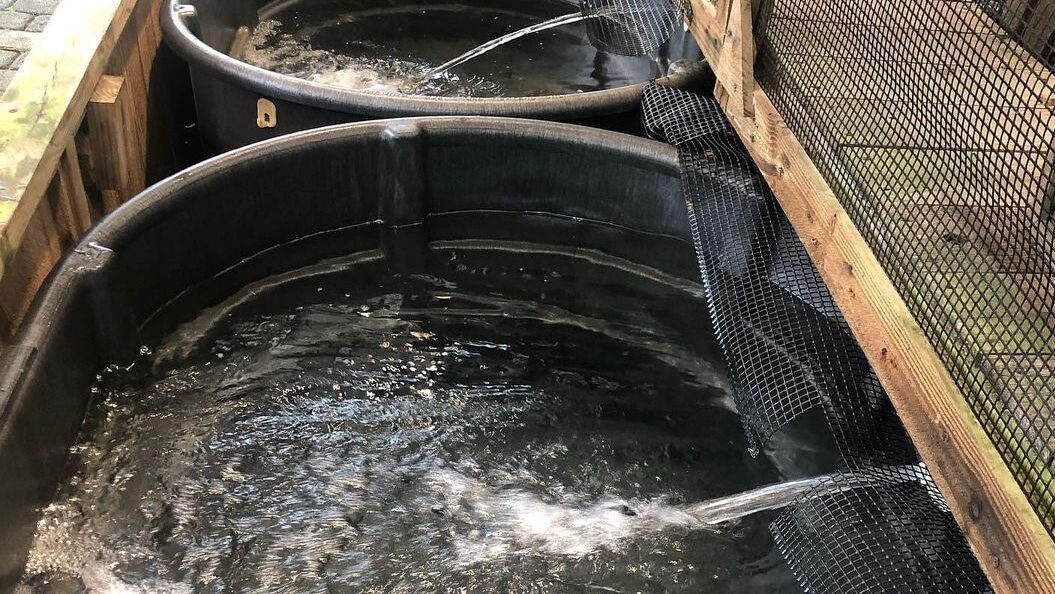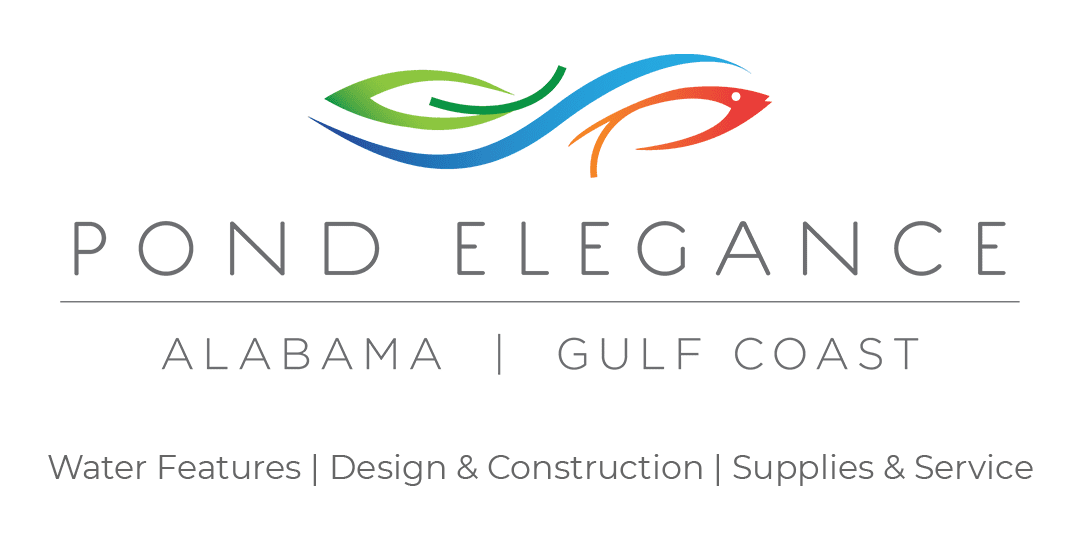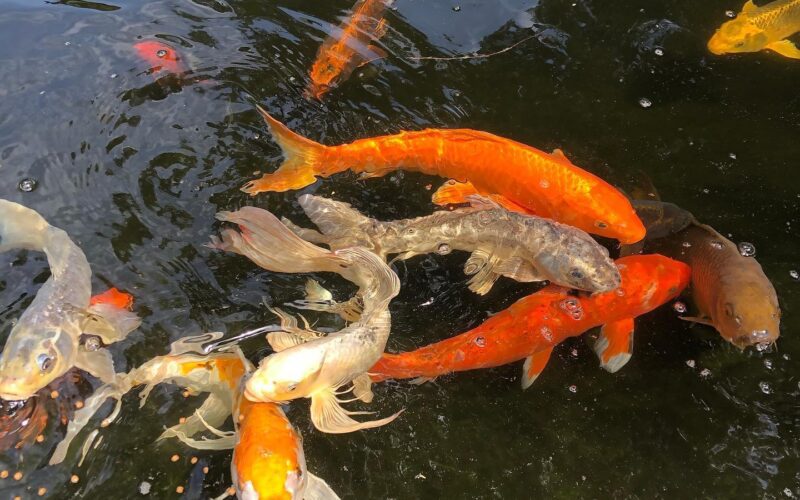
One of the most beautiful reasons to have a pond is the chance to own and care for Koi Fish. This majestic, colorful fish can transform a water feature. The presence of Koi evokes feelings of peace, strength, and courage. They are mentioned in both Chinese and Japanese folklore, after all. Somehow, this mutated Carp has taken over backyards and commercial ponds worldwide.Â
Originally from China, mutations in Common Carp fish changed their color and scale luster. Chinese farmers began domesticating and breeding the Koi fish because of their color mutations, but mostly for their meat. In about 200 BC the Koi fish arrived in Japan as a food source during a Chinese invasion of Japan.
Japanese rice farmers continued to breed the Koi for their meat, but also for their appearance. They bred them so much for their beauty that they became synonymous with Japanese gardens. Now there are 100s of types of Koi.
Koi are said to have become popular in the United States in the 1940s. The hobby of Koi-keeping was first observed by Japanese-American families. Eventually, the hobby spread in the U.S. as people became more interested in decorative fish and landscaping following World War II.
The hobby became so popular that the Associated Koi Club of America was formed in 1960.
Are you starting the hobby of Koi-keeping? Shopping for Koi for your water feature can be exciting, but where should you begin? Koi are more than just pets. They contribute and take from your pond’s ecosystem. Like plants, Koi can make or break the balance of nutrients in your water. Most notably, Koi are ornamental. As they dance through your waters, their shine and color dazzle the gaze.
For healthy, happy fish, here is a quick guide to shopping with more than your eyes.
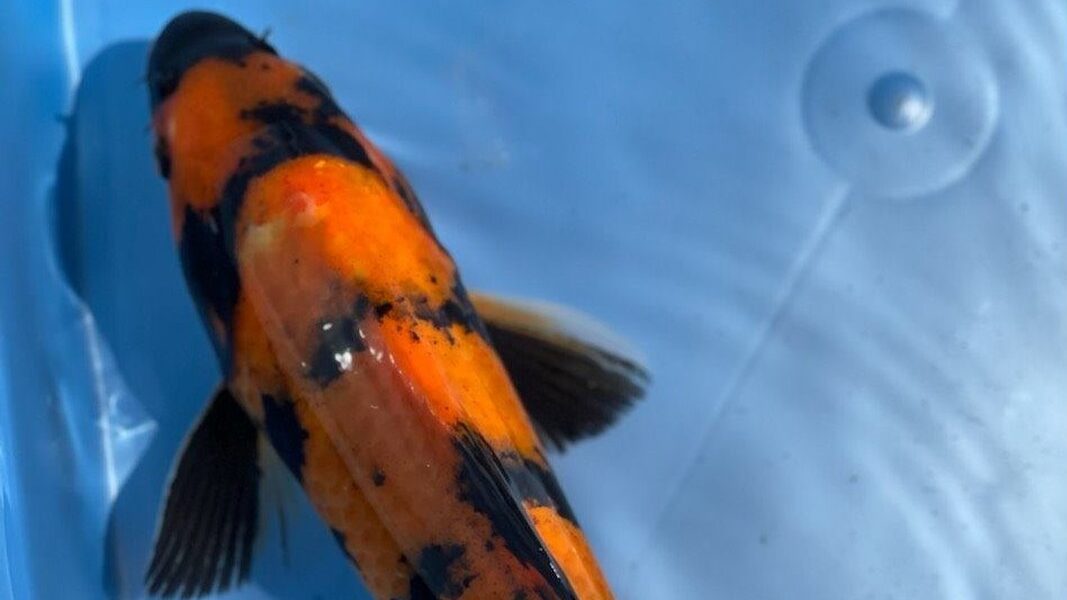
It’s alright to shop with your eyes, though. In fact, Koi varieties are named for their color, patterns, and scales using the Japanese language.
- Kohaku is a white fish with red patterns.
- Taisho Sanke is a white fish with red and black patterns.
- Showa Sanshoku is a black fish with red and white patterns.
- Bekko is a white, red, or yellow fish with black patterns.
- Utsurimono is a black fish with white, red, or yellow patterns.
- Asagi is a bluish, gray fish with red or orange patterns along its sides.
- Shusui is the same as Asagi, but the red or orange patterns are along their backs.
- Ogon is a solid-colored fish. They are gold, platinum, or orange.
- Chagoi is a brown or green fish with a smooth texture.
- Tancho is a white fish with a red dot on its head.
These are just the top 10 of the most popular types of Koi. There are many different sub-varieties within each category. Because of varying breeding methods, Koi types are constantly evolving.
When shopping with your eye, make sure the Koi exhibits signs of good health. A healthy Koi fish should be active, alert, and swimming energetically around the tank.
Specifically, look at the eyes of the koi fish. Check that they are clear and free from cloudiness, bulging, or other abnormalities. Check the same for the scales of the Koi. Scales of a healthy Koi fish should have vibrant, bright colors, with no signs of discoloration or fading.
The health of your Koi is most important when shopping.
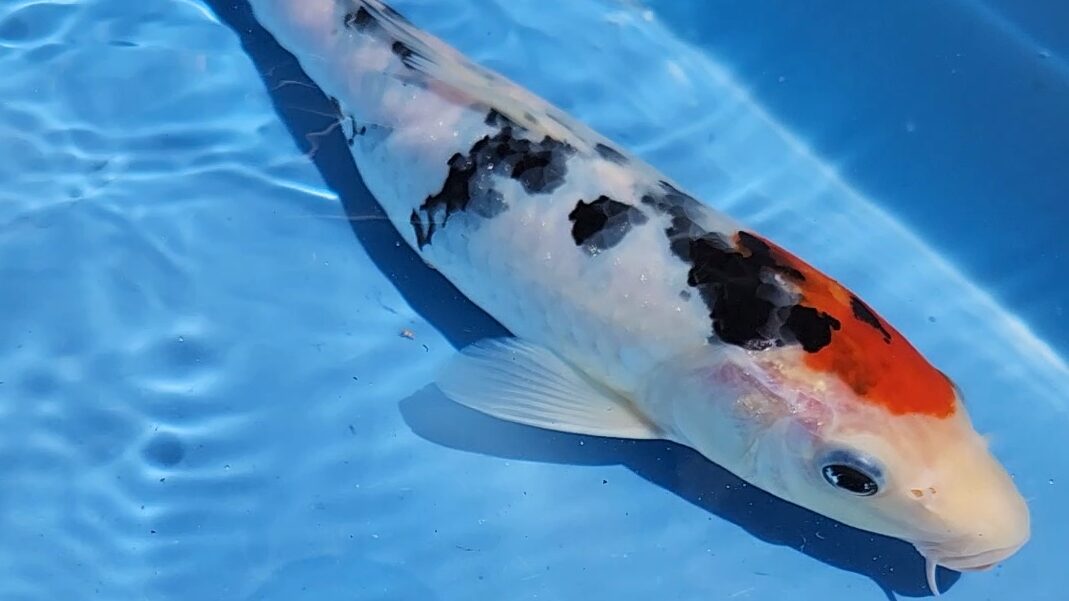
The health of your Koi is most important when shopping. That means where you get your fish is just as important. Local shops should get their Koi from reputable and trustworthy breeders. Buying Koi in person is great because you can get a first-hand look at your new family member. When buying directly from a breeder, you’re likely only able to do so online.Â
Pond Elegance gets all of its fish from outstanding breeders. This includes Blue Ridge Koi & Goldfish. They are America’s largest and longest-running Koi & Goldfish farm. They introduced the Butterfly Koi to the United States.
Another great Koi breeder that supplies Pond Elegance is Blackwater Creek Koi Farm. They are committed to fish health through their Bio-Security protocols that greatly reduce fish health issues.
Pond Elegance also stocks its fish from Bassinger Koi Farm. Bassinger Koi Farm has been producing high-quality Koi and Butterfly Koi since 1972.
The longevity and health safeguards of these breeders are part of the reason Pond Elegance has been the Gulf Coast’s supplier of Koi and pond elements for over 30 years.
Pond Elegance goes the extra mile when new fish arrive. To maintain the Koi’s health and safety, new Koi are quarantined for 10 days before joining any other fish in a tank.
Transferring Koi is all about Stress Management.
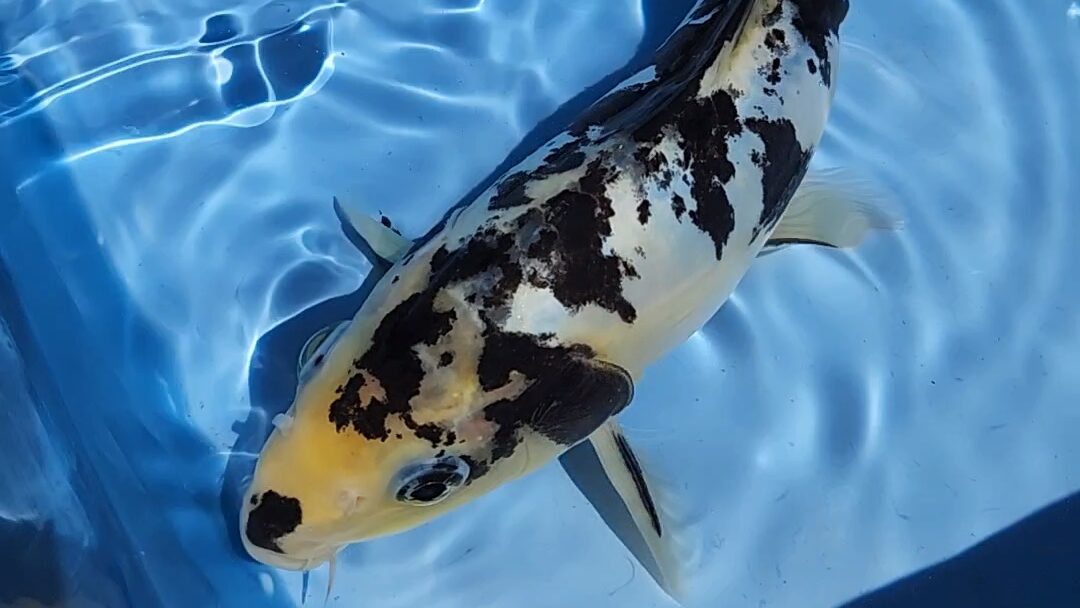
Introducing new fish at the store, like introducing them to a new pond, is all about stress management. Signs of illness or stress in Koi fish can be subtle or hard to detect. It’s important that fish be monitored regularly.
Stress can weaken the immune system of Koi. A weakened immune system can leave them more susceptible to bacterial, viral, and parasitic infections. Stress can also disrupt the balance of beneficial bacteria in the fish’s gut, which can further weaken its immune system. Some stress-related illnesses include popped eyes, raised scales, anchor worms, and Koi herpesvirus. These illnesses can be serious and even fatal if not treated immediately.
Every pond and tank has parasites and bacteria. They make up the unique ecosystem of your pond. Before adding new fish to your own pond, you should take some precautions to prepare them.
Allow your fish to come to the same temperature as your pond by letting the fish stay in its transport bag, submerged in your pond’s water for 15 to 20 minutes.
To give your new Koi the best chance of survival, maintain a clean, debris-free pond. Your water should be clean when adding new Koi.
Have a clean and safe environment prepared for your new Koi.
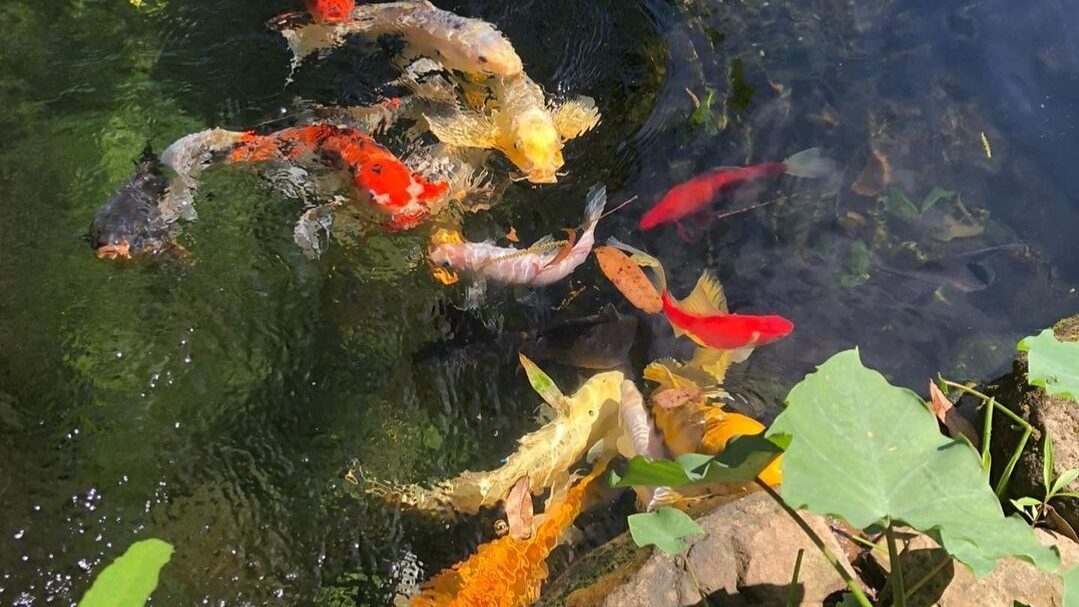
Use a filter to collect the debris that you aren’t able to skim from the top. Otherwise, organic material that collects in your pond will decay and contribute to algae growth. Algae growth affects the nutrient and oxygen levels of your pond. Talk to a professional about the size and type of filter that works for your pond.
Monitor your water quality as well. Have your pond water tested regularly. Your pH should be between about 6.8-7.5. Bring a sample of your pond’s water to Pond Elegance and the professionals on staff will check your pH as well as your ammonia levels.
Also, replace 10-20% of your pond’s water every one to two weeks. Frequent water changes remove excess waste and nutrients. Excess waste and nutrients can occur from unfiltered debris, but also from having too much of something in your pond.
Be aware of your fish load. Your pond can only safely support so many fish. Don’t jeopardize the quality of your water. Remember, stress leads to fish disease. Your pond can carry one fish per 100 gallons if the Koi are less than 15 inches long. For Koi that are above 15 inches long, you should carry one fish per 240 gallons.
Your fish load is up to you, but your fish may also spawn new Koi depending on the sex of the Koi you buy. Determining the sex of Koi can be tricky. First, your Koi needs to be mature enough to tell. After three years, when the Koi is at or above 10 inches, check the shape of the Koi’s body. Males tend to be more slender than females. Females will be rounder in shape.
Next, check the pectoral fin, the fin on their sides, closest to their heads. Male pectoral fins are triangular in shape and solid in color. Female pectoral fins are rounder in shape and transparent in color. In the spring, during mating season, you can also tell the sex of Koi through their behavior. Males will chase the females around the pond and violently knock them around to encourage them to drop their eggs for fertilization.
If the sex of the Koi matters to you, ask the professional when you are shopping. Also, buy mature fish that are easier to determine. Other than mating, the sex of the Koi in your pond isn’t as important as their health and aesthetic. Female fish do tend to cost more than males, though.
Prices are set based on size, shape, and fin type.
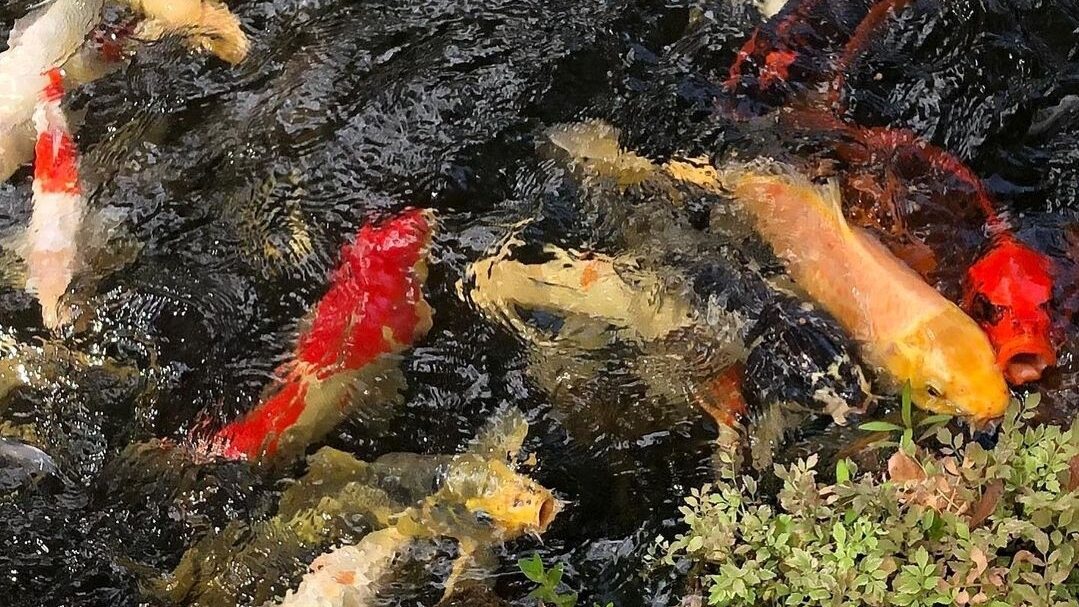
You can expect to pay anywhere from $12 to $400 for new Koi. Prices are set based on size, shape, and fin type. Now is a great time to shop for Koi at Pond Elegance. Premium Koi are on sale for 35% off through the month of April 2023. Be sure to follow Pond Elegance on social media to be the first to know about sales and events.
When shopping for Koi, those of us on the Gulf Coast are lucky to be able to do it year-round. There is no good or bad time to add Koi to our ponds. Koi add life, movement, and magic to ponds.
Shop with your eyes. Choose healthy Koi. Choose Koi you find beautiful and interesting. Also, shop with confidence. Know that you’re buying from reputable and trustworthy breeders who have a track record of excellent Koi. Have a clean and safe environment prepared for your new Koi. Be prepared to monitor and regulate their stress.
With this guide in mind, Koi keeping can be a fun and fulfilling hobby. Visit Pond Elegance Tuesday through Saturday, 10 a.m. to 5 p.m. They have a great selection of Koi to choose from as well as many ponds on site for inspiration. Happy Koi shopping!
